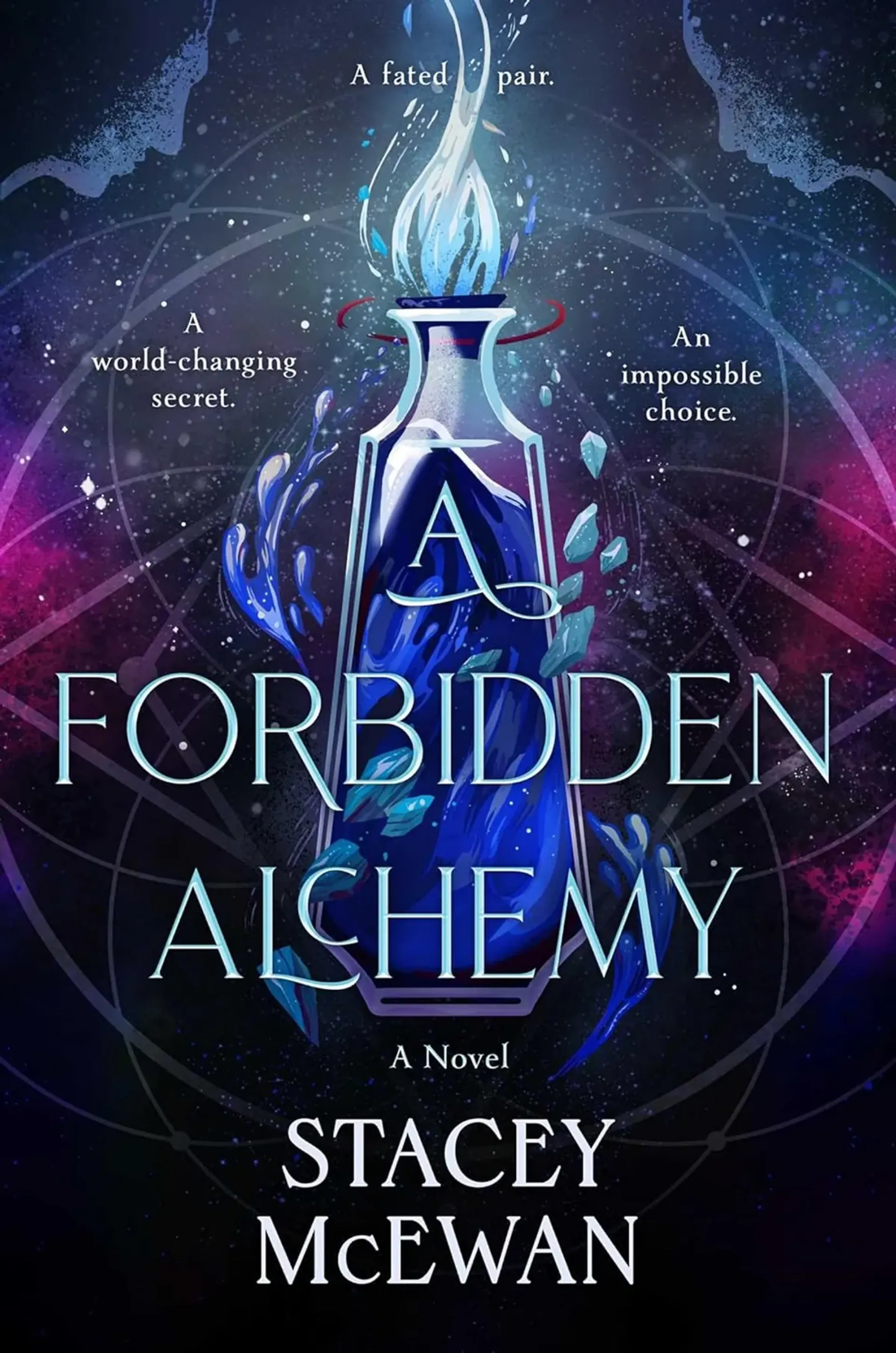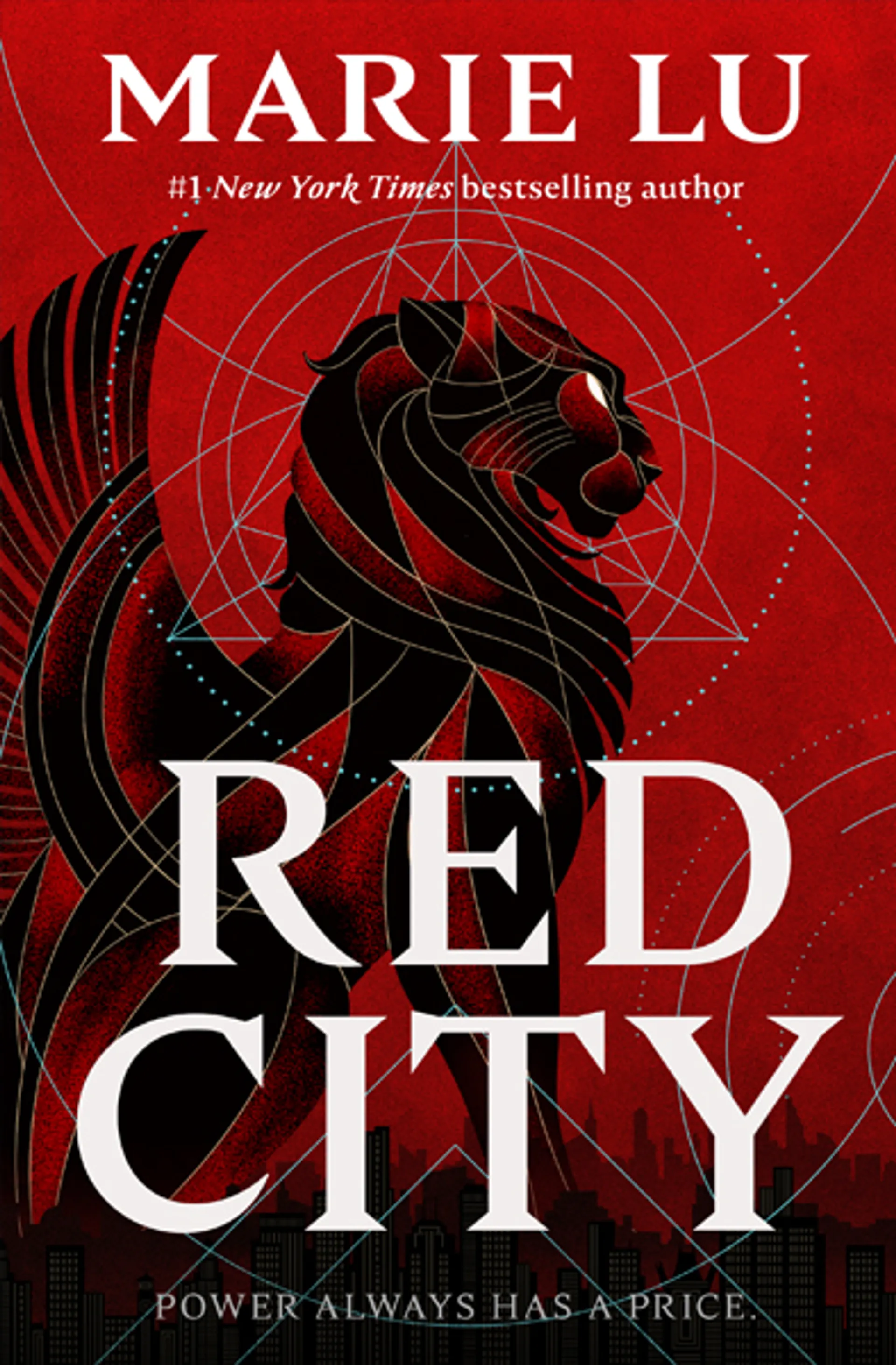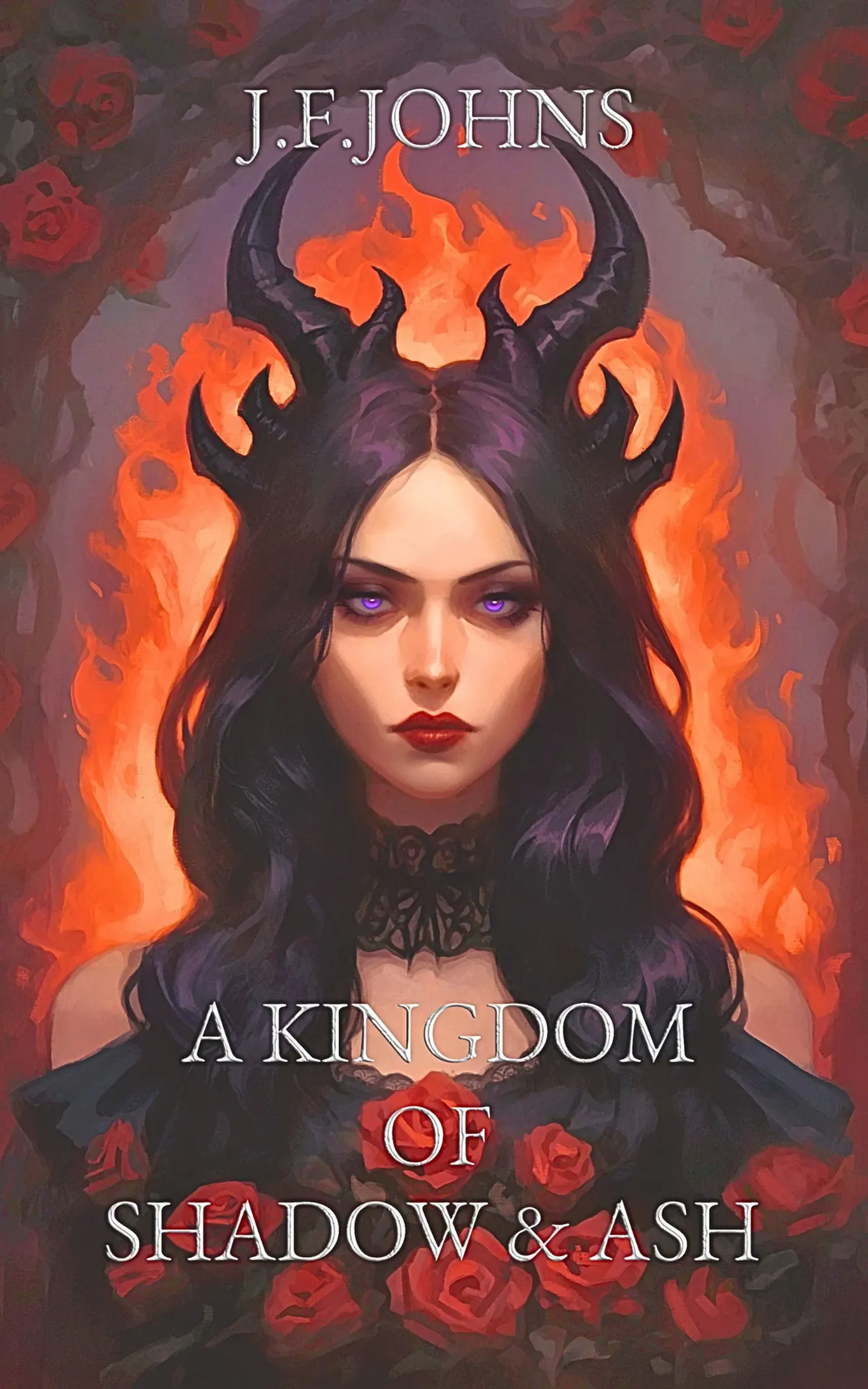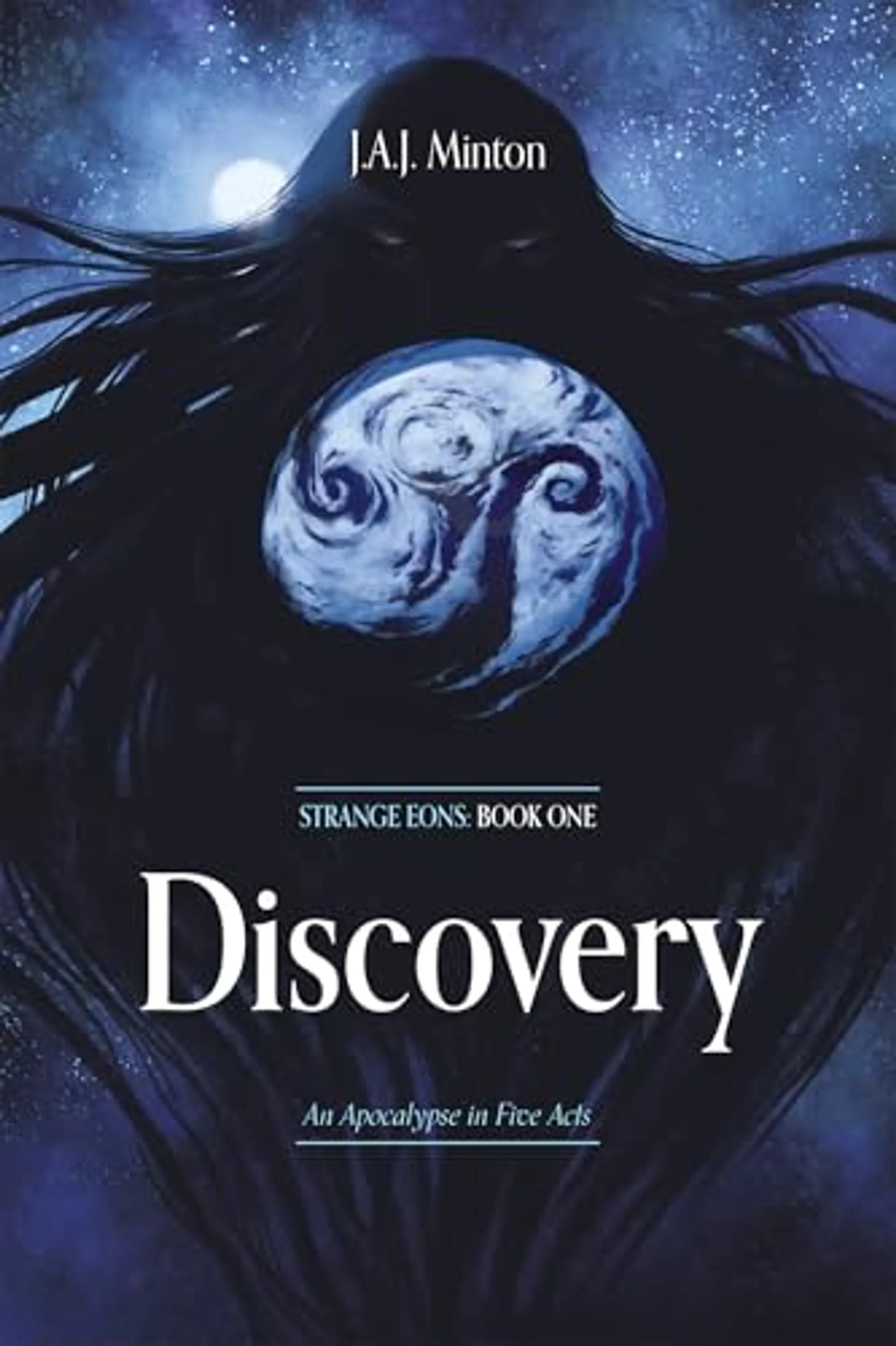A Forbidden Alchemy
by Stacey McEwan
Reviewed by BroMantasy on June 29, 2025
Est. Reading Time: 9 min
At a Glance: Peaky Blinders Meets Elemental Magic
At the age of twelve Nina Harrow and Patrick Colson learn the world’s magical system which grants power to Artisans while exploiting Crafters operates through deceptive means. When the two of them meet up again 13 years later on opposite sides of a revolution, their childhood secret has the power to fan class conflict into a war that will destroy their lives. In A Forbidden Alchemy, Stacey McEwan weaves an industrial fantasy that features real Irish family drama along with magic and political machinations.
The intertwining of romance and political thriller elements in A Forbidden Alchemy emanates from its realistic portrayal of magical conflicts through real-world economic class dynamics. It really does feel like a glimpse of early industrial society, with big-picture revelations that drive the personal stakes to suitably high levels.
Two Picks We Think Are Worth Reading
Gateway read, then more in a similar vibe
Explore More RomantasyPolitics. Magic. Unforgettable characters.
A World Where Magic Divides
McEwan creates an entire society built around the collection and use of idium, an alchemical substance which unlocks elemental magic in some humans but leaves others entirely without magic. The Artisans who have magical ability live a life of luxury, working as architects of the world with their elemental magic, while the non-magical Crafters do the manual labor to make the society run, risking their lives to mine the material that powers magic.
The magic system is both mysterious and realistic because it underpins rather than overpowers the book’s commentary on class. The elemental alchemy system creates a natural worldbuilding fit for an industrial setting, while also showing how the existence of magic both created and upholds systems of social stratification. Powerful plot elements and character motivations stem from the corruption central to the magical testing system.
The mining towns and industrial cities where the working class live feel lived-in because of McEwan’s focus on working-class communities. She depicts the ways that communities band together to support one another even as larger political forces try to manipulate their future. The juxtaposition of Artisan luxury and Crafter poverty lends authenticity to the revolutionary themes.
Characters That Feel Real
Nina Harrow is a well-realized protagonist, struggling with her Artisan education and her Crafter background. Her ability to charm earth elementals is unusual, making her useful to both Crafts and Artisans and dangerous due to her awareness of the ruling class’s corruption. Her habit of hiding important details from others causes frustration yet brings authenticity to the narrative.
Patrick Colson is a morally ambiguous leader of the resistance, willing to do whatever it takes to free his people while navigating the gray areas of his methods and alliances. His character design, inspired by Peaky Blinders, brings a mix of ruthless loyalty to his family and friends, strategic mind, and genuine compassion for his community. Patrick’s evolution from a rebellious child to a rebel leader is gradual and feels earned by the small details revealed about his past.
The Colson family provides a realistic depiction of working-class Irish family dynamics, grounding their chosen family bonds in authenticity. Their loyalty to each other and their community elevates the emotional stakes beyond the romance. Each of the supporting characters is distinct and memorable, contributing positively to the story without overshadowing the main plot.
The romance between Nina and Patrick is gradual and believable, rooted in their childhood connection and their reunion as adults. The conflict between their current positions is realistic, while their shared past adds layers of tension and unspoken understanding. Their chemistry is palpable and feels real because it is built on mutual respect and empathy.
Politics and Revolution Done Right
The book weaves in themes of capitalism vs. communism through the system of Artisan elite ruling over Crafter workers. The political aspects of the book feel timely without being too on the nose, as they stem directly from the magical world-building. The revolutionary group has earned legitimacy through their ties to real grievances and community needs.
McEwan balances the political maneuvering with the personal relationships in ways that strengthen both. The conspiracy at the core of the magical system creates stakes that are both intimate and political. The themes of class warfare ground the characters even as they drive the plot forward.
The pacing ratchets up the tension through both alternating perspectives and escalating revelations. The political machinations never overshadow the romance because both are part of the larger story about individuals torn between loyalty and justice. The revolutionary themes ring true because they center on community survival rather than ideology.
Between the Sheets: Romance in the Revolution
A Forbidden Alchemy rates 🌶️🌶️ (2.0) on the spice scale for a few mildly descriptive scenes that contribute to the emotional development of the characters without being too central to the plot. The story uses physical intimacy to support character development and deepen relationships without resorting to unnecessary displays.
The gradual build-up of the romantic tension between Nina and Patrick feels satisfying because it occurs concurrently with the political tension. The romantic moments not only serve as emotional relief from the overall conflict, but they also reinforce the personal stakes that Nina and Patrick have in their opposing loyalties. The tension between them feels authentic and romantic, which is integral to the story.
The romantic subplot doesn’t overshadow the political aspects because Nina and Patrick’s emotions for each other complicate their loyalties to their respective sides. Their personal relationship elevates the stakes of the larger conflict, but it also introduces hope that their respective sides can find common ground.
Darkness Factor: Class Warfare with Hope
A Forbidden Alchemy has been given 💀💀💀 (3.0) for how dark it is because it directly tackles the social issue of classism, and the societal corruption keeping people in place, without wallowing in nihilism. The conditions of miners dying in a pit of literal and figurative filth to provide the energy to build mansions and magical innovation is upsetting.
The political intrigue treats the trauma of generational poverty as real by showing the lengths that powerful families go to maintain their control over an entire village. There is no flinching from the ways in which systemic oppression plays out in the Colsons’ family life, especially in the deadly profession of mining.
The revolutionary aspects are also not sugarcoated. There is violence, and the moral ambiguity of the character’s decisions about tactics and collateral damage are fully explored. The class warfare provides the genuine life-or-death stakes.
I think it was balanced by the strength of the found family in the Colson clan. There is hope of real change when a community can work together for the betterment of all its members. Patrick is a hot blooded, passionate fighter, but his fierce loyalty and love for his people grounds him. The romantic relationship between Nina and Patrick also gives the hope that there can be progress made between different political groups through personal connections.
The book doesn’t let the reader off the hook from the very real issues, but it also doesn’t let itself off the hook by becoming nihilistic. I think people who want to see class themes explored well in literature will find this darkness is earned and in the service of its themes, rather than gratuitous.
Book Battlefield: Revolution and Romance
A Forbidden Alchemy lays a solid groundwork for the trilogy it introduces. Magic weaves through this world in service of the political themes rather than taking center stage. McEwan is deft at juggling several plotlines without losing sight of the characters or their relationships.
The book succeeds because it delivers believable industrial fantasy settings alongside romantic elements readers of this genre anticipate. The Peaky Blinders aesthetic heightens the magical aspects by keeping the social dynamics familiar. The revolutionary themes are believable because they come from the characters’ motivations rather than being tacked on to the plot.
The political intrigue raises the stakes and the romance provides the heart. The class warfare runs through both character and world-building to move toward revelations that portend some serious ramifications for the next books.
Should You Bother?
For Romantasy Fans: Highly recommended. The romance is paced in a natural way and complements rather than competes with the political aspects, the yearning is palpable., and the spice is spiced right.
For Political Fantasy Readers: Certainly worth reading. The class warfare elements feel organic and very well done with the worldbuilding.
For Peaky Blinders Fans: This is 100% Peaky Blinders coded, but not in a way that feels like a rehash, and we’re here for it. Elemental magic blends seamlessly with the Peaky Blinders aesthetic to craft a completely unprecedented creation.
For Revolution Stories: Strongly recommended. The revolutionary aspects are founded in legitimate class-based grievances while also offering hope of improvement.
Final BroMantasy Verdict
The book deserves it’s 4.0 rating because it combines industrial atmosphere with elemental magic and delivers a strong political message. In Stacey McEwan’s world class conflict doesn’t feel forced or like an afterthought, love doesn’t take away from the drama and stakes of political turmoil and magic is used as a tool for the themes of the story rather than magic overpowering the characters or the plot.
The book delivers strong characterisation through its representation of authentic working-class families and protagonists with morally ambiguous traits. I felt the interactions between the Colson family members were realistic and I also felt the romance between Patrick and Nina had a good balance of attraction, conflict and tension. Political issues deepen character development and create reveals which pose genuine threats to their world.
I felt that Stacey McEwan understood both the romantic and political side of storytelling, using both of these components to make each other better. The world of industrial fantasy mixed with the plot of a revolution felt like new meat on old bones and the stakes of a revolution had an appropriate personal cost as well as a large scale societal impact.
For anyone that is looking for a good romantasy with real political undertones A Forbidden Alchemy is an excellent example of what the subgenre has to offer at its best. I’m very much looking forward to the rest of the series, as this set up is more than enough to give this series a good place to start and the characters and world building are ones I want to follow.
You Might Also Enjoy
Frequently Asked Questions
Is this book part of a series?
Yes, this is book 1 in the The Artisan series.
How spicy is the romance?
We rate the spice level at 🌶️🌶️ (2/5). Includes a few mild explicit scenes which develop romance and emotional intimacy without overpowering political narrative.
Which chapters contain spicy content?
The spiciest content can be found in chapters: 48, 49, & 61.
How uncomfortable is it to read in public?
We rate the public reading discomfort level at 😳 (1/5). Themes of class conflict and corruption are central, but the content is not graphically overdone for public reading settings.
How dark are the themes in this book?
We rate the darkness level at 💀💀💀 (3/5). Existential stakes from political and mining town struggles are prevalent and carry the book's weight, but elements of hope and family prevent the story from becoming too oppressive or hopeless.
What age group is this book for?
This book is generally recommended for adult readers due to its mature themes. We recommend checking specific content warnings if you are sensitive to certain topics.






